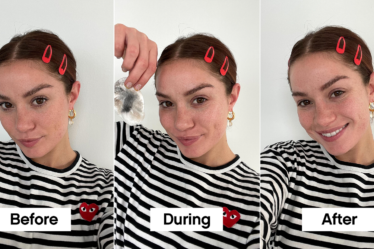LuisaViaRoma has landed in New York City.
On Monday, the Italian retailer opened a new store in New York’s NoHo neighbourhood, its first outpost outside its home country. Fittingly, the 16,500-square-foot space is peppered with Italian touches such as tall columns, black fixtures and flooring made of clay imported from Tuscany.
Those elements may make the store feel a bit like a museum, but it also features interactive screens for shoppers to browse and place orders from its website, a nod to the fact that around 90 percent of the company’s projected €450 million ($490 million) in gross merchandise volume — a measure of sales generated through its online and physical stores — will come from e-commerce in 2024.
The stylishly dark and moody outpost is more than just LuisaViaRoma’s first attempt at international expansion since it opened its doors in Florence 95 years ago. It’s also a bid to recapture the retail magic of once-iconic, now-shuttered multi-brand stores like Barneys or Opening Ceremony,.
“Many iconic multi-brand stores that define New York City have closed in recent years, and they have not been replaced in the hearts of New York consumers,” Andorlini said. “LuisaViaRoma aims to become the new destination for sophisticated and conscious shoppers.”
Specialty stores are growing in popularity, offering consumers better curation and more personalised customer service than department stores, and giving brands a wholesale alternative to struggling multi-brand retailers.
But most are local go-tos, not global powerhouses. Expansion mainly occurs domestically: Miami-based The Webster is opening two new stores in the US in 2024; New York-based Kirna Zabete is opening a store in Miami this year. Milan-based 10 Corso Como’s lower Manhattan location, meanwhile, became a casualty of the pandemic, closing in 2020 after only two years as it struggled to find an audience.
LuisaViaRoma has reason to believe its New York opening will resonate. The company generates 25 percent of its online sales in the US, with New York as its biggest market. Its overall sales are set to increase 15 percent this year and US sales are projected to rise as much as 50 percent. With the new shop, located on Bond Street, LuisaViaRoma expects its US business to double by 2026, said Tommaso Andorlini, the company’s chief executive.
The New York store will be a test of LuisaViaRoma’s adaptability to a milieu outside of Italy, but also of New Yorkers’ appetites for a well-curated multi-brand retail experience. LuisaViaRoma may have a reputation at home, but that doesn’t mean discerning, fashion-obsessed New Yorkers will choose the retailer over homegrown favourites like Kirna Zabete in SoHo or La Garçonne in Tribeca.
“Long gone are the days where you can spend a lot of money to open, therefore you are successful. New Yorkers are highly educated fashion people,” said Julie Gilhart, a fashion consultant and former long-time fashion director at Barneys. “[LuisaViaRoma] is not going to be successful on their name alone. New Yorkers are not like that.”
Making a Mark
LuisaViaRoma’s chances at success begins with the right location. For example, 10 Corso Como’s experimental format and avant garde offering didn’t translate to Manhattan’s seaport area, where mass retailers take precedence, said Robert Burke, a retail veteran and consultant.
LuisaViaRoma, on the other hand, is located on Bond Street in the already fashionable and monied NoHo. It has a slew of high-profile neighbours, including Gigi Hadid’s cashmere brand Guest in Residence, Gwyneth Paltrow’s Goop and anointed menswear store CHCM.
Inside, LuisaViaRoma has infused local touches alongside the Italian accents. There are books from the nearby Dashwood Books at the front of the store and music curated by Arman Naféei, the former music director for André Balazs’ hotels (including Chateau Marmont and Chiltern Firehouse).
Atmosphere aside, it’s a specialty store’s brand selection that ultimately wins over the local customer. LuisaViaRoma’s store carries 100 brands, including New York mainstays Proenza Schouler, Nili Lotan and Gabriela Hearst. A downstairs lounge with luminous pink walls will host private appointments for VIP clients, as well as select couture pieces and fine jewellery. Looking ahead, LuisaViaRoma plans to ramp up its mix of emerging brands, which are increasingly pivotal to specialty stores as established labels pull back from multi-brand retailers and increase investments in their direct channels.

“There’s still pings of the loss of Barneys, [which] always had an interesting mix of the major labels and new discoveries,” Burke said. “That is a very important point to look at with retail today.”
Where the retailer can stand out right now is its technological savvy. The interactive screens, for example, make sense as an offering for modern shoppers, who often browse online while visiting brick-and mortar-locations. LuisaViaRoma’s intent to connect its online and in-store experiences can become a point of differentiation, potentially giving it a leg up by understanding its shoppers and how to serve them better.
“More than anything, you have to have a very clear vision of who your customer is when you expand internationally,” Burke said. “I’m sure [LuisaViaRoma’s] website has educated them enormously on their US customers.”



